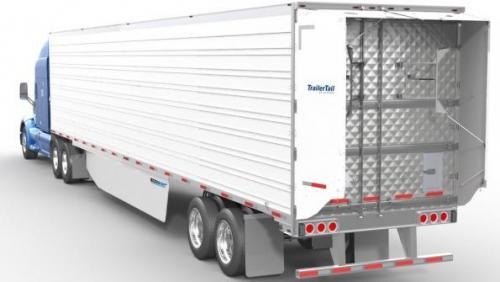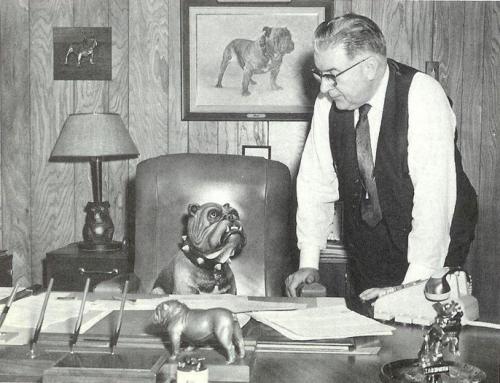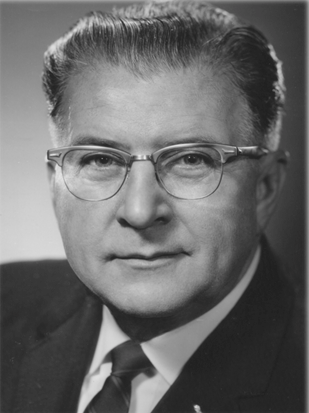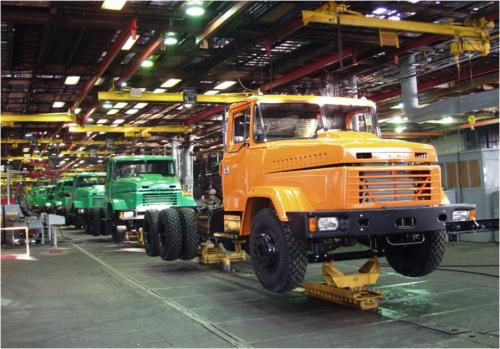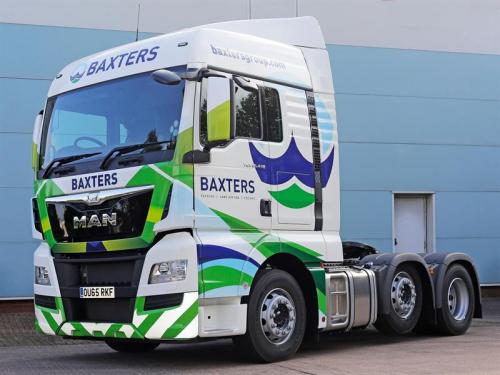
kscarbel2
Moderator-
Posts
18,868 -
Joined
-
Days Won
114
Content Type
Profiles
Forums
Gallery
Events
Blogs
BMT Wiki
Collections
Store
Everything posted by kscarbel2
-
Heavy Duty Trucking / October 19, 2015 As Navistar continues to make progress putting the “dark days” of its failed EPA 2010 emissions strategy behind it, the truckmaker will re-brand its product lineup as it rolls out new models starting next year. In an interview during the American Trucking Associations’ annual Management Conference & Exhibition, Jeff Sass, senior vice president for truck sales and marketing, said he thinks truck sales overall next year will be good for International as well as for the industry overall. Looking ahead to 2016 expectations, “I think it’s going to be strong,” said Sass, who joined Navistar about four months ago after a 20-year career at Paccar. “It probably won’t be as high [as 2015] in the on highway sector, maybe down 5%. The vocational sector will be flat to up a little bit and we feel medium-duty will be up.” As far as International trucks specifically, Sass sees "nothing but upside” next year. “We’ve gained a couple points of [market] share in medium this year, and we plan to gain a couple more points in medium next year. We think we’ll see an uptick in market share for our on highway product as well. and with the introduction of our new vocational product I think we’ll see growth there.” The new vocational product, which will replace the PayStar, will be unveiled in February during the World of Concrete event in Las Vegas. It is scheduled to start rolling off the line in April, just in time for the construction season. The “star” nomenclature will be retired in favor of a letter-and-number system. The vocational truck will be referred to as HX, followed by a 3 digit code signifying whether it’s long or short hood and set-forward or set-back axle. Next up will be a replacement for the ProStar, which will be called the LT series. It’s scheduled to be introduced in a late summer time frame, and will feature the new configurations to meet 2017 greenhouse gas regulations. The upcoming Class 4/5 product being co-developed with GM also will use the same naming style: CV, for commercial vehicle. The Chevrolet version will have some different styling and a different name. Why the move to a different naming convention? “It’s just time,” Sass explained. “We have a chance for rebranding and an opportunity to provide the customer with a new experience with Navistar in their International products.”
-
Fleet Owner / October 19, 2015 A recently released study from the National Resource Council of Canada determined that the combined use of a rear fairing and trailer skirt provides a 10% increase in aerodynamic efficiency above the sum of the individual products. The review, conducted from 2012 to 2015, used products comparable to the Stemco TrailerTail and EcoSkirt in a 30% scale wind tunnel to evaluate the benefits attainable by a variety of commercial trucking aerodynamic devices, Stemco said. According to Stemco, the study revealed that “side-skirts and boat-tails provide the greatest drag reductions” among the devices studied. The findings, the company stated, determined that users can save nearly 1,400 gallons (5,300 liters) of fuel per truck, per year by using both a rear fairing and side skirt. "In our study, we were excited to see that adding skirts and tails were actually mutually beneficial at multiple yaw angles," said Brian McAuliffe, senior research officer at the National Research Council of Canada. "We hope our study will help North American trucking fleets become more fuel efficient and better understand the aerodynamic benefits of current and future technologies." Stemco said the NRC test also confirmed research completed by the company, which indicated that a 4-sided, 4-foot-long TrailerTail 4x4 delivers slightly more drag reduction than the 3-sided, 3-foot-long TrailerTail Trident. However, combined with Eco-Skirt, both TrailerTail 4x4 and TrailerTail Trident models meet the Environmental Protection Agency’s proposed GHG Phase 2 regulations, according to Stemco. "The NRC study further validates that a TrailerTail and EcoSkirt should be essential elements in modern fleet operations," says Al Smith, director of sales for Stemco Innovative Tire & Mileage Solutions group. "Companies could be losing over a thousand dollars in fuel costs per trailer per year by only using one or the other." .
-
Kenworth to Roll Out DAF MX-11 Engine For Vocational, Regional Haul Customers in 2016 Trailer/Body Builders / October 19, 2015 Kenworth will begin selling the DAF MX-11 engine to its vocational and regional haul customers in the United States and Canada in January 2016. Just introduced by PACCAR, the 11-liter engine is designed to produce up to 430 hp and 1,550 lb-ft of torque. It is positioned between the Cummins PX-9 and DAF MX-13 engines to give Kenworth an expanded range of proprietary engines for its Class 8 product line. The DAF MX-11 engine will be available for the Kenworth T880, T680, T800 with FEPTO, and W900S and will be built at PACCAR’s engine plant in Columbus, Miss. “The MX-11 fits a sweet spot for many of our customers, who need a lighter engine that provides ample horsepower and torque,” said Jason Skoog, Kenworth assistant general manager. “It is 400 pounds lighter than 13-liter engines, and due to the weight savings, provides our customers a boost in payload capacity and fuel economy.” Skoog said the engine has logged significant testing hours throughout North America and has delivered excellent results. “Drivers are telling us the engine has plenty of low-end power and it’s a great match for applications requiring less than 450 hp. Like all PACCAR engines, the MX-11 was designed for long-life and maximum productivity.” The DAF MX-11 is a six-cylinder, 24-valve design and has double overhead camshafts along with high-pressure common rail fuel injection. Like the DAF MX-13, the engine block is constructed from compact graphite iron with vertical ribs to maximize strength while reducing noise levels. To help serve customers, Kenworth is conducting extensive DAF MX-11 training for Kenworth dealer service technicians and salespeople in the United States and Canada as part of its preparations for the DAF MX-11 engine launch. The DAF MX-11 is featured in the current Kenworth Road Tour focused on fuel efficiency and weight savings with stops at 28 Kenworth dealer-hosted events in the United States and Canada.
-
What is your model and serial number, as shown on the vehicle identification plate located on the driver's door?
-
In America, Volvo shouldn't forget how they got to the party. In the second half of the game, it was Zenon C.R. Hansen who created the Mack Trucks, the image, that Volvo has profited from for fifteen years. In no uncertain terms, Zenon C.R. Hansen was the best CEO in the history of America's truck industry right up to the present day. No finer person have I ever known.
-
Legacy of Leadership - Zenon C. R. Hansen “Lead, follow or get out of the way – make a difference.” "Work hard and aim high to succeed." http://bookcrafters.net/preview/Hansen_preview.pdf
-
Shows are indeed expensive, which is why Hannover is held every two years. Hannover is a professional show with the global truckmakers, and suppliers, presenting their latest cutting edge products. Toby Young and his Exhibit Management Associates don't know how to put on the professional (Hannover-like) trade that Daimler and Volvo are accustomed to. And the small Louisville exhibition center can't even compare with the stunning and massive Messe Hannover facility.. The Louisville show has always been an amateur event geared towards owner-operators, not the fleets where the money and volumes are.
-
Louisville never became a professional show. The people holding it had a chance, but were amateurs. The IAA show in Hannover is the global benchmark for truck industry shows.
-
Hansen Eulogized As Good Scout Workers Pause At Mack Plants, Friends Gather At Cathedral November 06, 1990 / The Morning Call Seven thousand employees at Mack Trucks Inc. facilities from South Carolina to Allentown stopped work yesterday, remained silent for one minute and remembered Zenon C.R. Hansen, their former chairman, president and chief executive officer. At 10 a.m. -- the same moment tools were shut off at Mack -- a bell tolled at the Scottish Rite Cathedral in Allentown, beginning a memorial service for Hansen, 81, who died of leukemia on Oct. 19. "Great leaders never have an age," said Dr. Thomas Harrai, who delivered the eulogy. Harrai served with Hansen on the board of directors of Super Foods Services Inc. of Dayton, Ohio, until Hansen's death. "He was as active in retirement as he was here with Mack.... "He was a traditionalist, a futurist, a perfectionist and, then, a loyalist." Hansen was largely responsible for reviving Mack Trucks Inc. in the 1960s and making Allentown "The Truck Capital of the World" in the 1970s. Flags at Mack facilities flew at half staff. But, at the cathedral, Hansen also was remembered for his friendship with football legend Vince Lombardi; for unabashedly waving the flag; and for being an Eagle Scout, earning 81 badges -- 60 more than the required 21. Four Eagle Scouts from the Minsi Trails Council served as color guard, carrying the American and the Boy Scouts International flags to the stage of the cathedral to begin the service. Among the Eagle Scouts serving as ushers were eight Mack employees, many wearing their Eagle medals over their hearts -- right next to the bulldog lapel pins that Hansen made famous. Also in attendance were Hansen's widow, Marilyn; other family members, and many former Mack employees, including former chairman John B. Curcio. The crowd of 300 people stood as the flags passed, and then the Lehigh Consistory Choir sang "The Battle Hymn of the Republic." "He believed in tradition," said Harrai. "And he felt that traditional parts of our society should not be broken up by human lack of interest." Born July 23, 1909, in Hibbing, Minnesota, Hansen was an orphan. But he found his family at age 12, when he became a Boy Scout in Sioux City, Iowa. "All of us have some moment in our life that our life is changed," Harrai said. "He stood with a group of kids. And he raised his hand. And then Zenon C.R. Hansen said for the first time, `On my honor, I will do my best, to do my duty to God and my country. And to obey the Scout law ...' "That became his decision factor at every point of his career. He never understood why people talked about scouting as if it was something for children." By the time Hansen reached 19, he was working in France for International Harvester, now Navistar International Corp. There, he saw the seeds of the Great Depression and World War II. "Zenon learned not to be intimidated," Harrai said. "He saw misdirected leadership and ruthless leadership that harmed innocent people." Thus, Hansen developed the uncanny ability to remain friendly with both hourly workers and executives. "In 45 years in the trucking industry, Zenon never suffered a strike," Harrai said. "He knew there were unions and that there was a place for unions. "He didn't want any separation. He never wanted to be where he would be removed from the aches, the pains, the turmoil, as well as the hopes and dreams of a good job ... That's why he moved all Mack's offices to Allentown." And that's why people such as Ronald Lorenz, president of Winnsboro Local 5841 of the United Auto Workers, took a moment yesterday to remember Hansen. "I worked at Mack while he was the head honcho," said Lorenz, whose local took a collection among Winnsboro workers and made a donation to the Boy Scouts in Hansen's name. "He was a great salesman, a promoter. He could have sold anything, not just trucks." Harrai confessed that he once got caught by one of Hansen's schemes. "I was here in Allentown to do a farewell dinner for Zenon," Harrai said. "He wanted to go out in a blaze of glory. It was a dinner to raise bonds for Israel. "We raised more money for Israel than had ever been raised out of New York City. It was so wonderful, it made the New York Times. "And I'm Lebanese. I think I heard from every Lebanese person, `Why are you helping Israel right after the six-day war?'" In mixing business and politics, Hansen was ahead of his time. Before retiring from Mack in 1974, Hansen proposed building a truck assembly plant in the Soviet Union. His idea was immediately panned by Forbes magazine and the Wall Street Journal. "Today in Washington, D.C., they're stumbling all over each other to find out who should get credit for the Iron Curtain being pulled up," Harrai said. "He made only one error, typical of Zenon C.R. Hansen. He was just more than a decade before his day." Hansen, a Mason since 1945, was made an honorary member of the Supreme 33rd degree council in 1971. "Tendering our last farewell, let us reserve his memory and dwell on all that was good and amiable in his character," said C. Deforrest Trexler, a Mason and a Mack attorney who delivered the benediction. "Farewell, you have gone to meet your God, and may he approve you." Harrai said he suspects Hansen is already shouting some orders in the hereafter. "The first thing that Zenon has done is to tell Vince Lombardi that the angel should go over right tackle instead of left guard," Harrai said. "Vince might say, `That's the way we do it here in the pros, not in college.' "What a time they are having up there."
-
Zenon C. R. Hansen, 81, Leader Who Restored Life to Mack Truck The New York Times / October 23, 1990 Zenon C. R. Hansen, chairman, president and chief executive of Mack Trucks Inc. in the 1960's and 1970's, died Friday at his home in Sebring, Fla. He was 81 years old. A spokeswoman for the family said he died of leukemia. Mr. Hansen, who is credited with turning Allentown, Pa., into "the truck capital of the world," joined the company in 1965 as its fifth chief executive in less than 10 years. In the nine and a half years he ran the company, he not only turned it around but also was so successful that Mack, for the first time in its history, reached $1 billion in annual sales. Mr. Hansen stepped down as president and chief executive in 1972. He remained chairman until 1974, when he retired. 'A Tough and Reliable Symbol' The first thing he did on taking the job with Mack was put his basic business tenet into effect: "The most important thing to a company is spirit; without that, you have nothing." He chose the Mack bulldog, the company's corporate symbol, as the means of injecting new life into the concern. "It was the best-known symbol in the trucking business, and it typified what I wanted the company to stand for: a tough and reliable product," Mr. Hansen said. He centralized Mack's operation by moving corporate headquarters to Allentown, the site of its assembly plant, and improving its components plant in Hagerstown, Md. He also moved the company into the West Coast trucking market and substantially improved labor relations. One of his most important decisions was to move the constant horsepower Maxidyne diesel engine off the drawing boards to the market. Mr. Hansen was born in Hibbing, Minn., and got his start in the trucking business as a teen-ager in 1927, when he took a summer job with the International Harvester Company in Sioux City, Iowa, before going to college. He liked the job so much he stayed. After 17 years with Harvester, he quit in 1944 to become general manager of a distributor of Diamond T trucks based in Portland, Ore. In 12 years he worked himself up to the presidency of Diamond T until it was acquired by the White Motor Co. in 1958. He was executive vice president of White until he resigned to become president and CEO of Mack Trucks in 1965. He is survived by his wife, the former Marilyn Hallman.
-
Zenon C.R. Hansen, 81, Dies - Mack Trucks Lauds Its Former Chairman October 20, 1990 / The Morning Call Zenon C.R. Hansen, the man largely responsible for reviving Mack Trucks Inc. and making Allentown "The Truck Capital of the World," died yesterday in Sebring, Fla. Hansen, 81, was chairman, president and chief executive officer of Mack during the heyday of heavy-duty trucking in the 1960s and 1970s. "Many well-informed individuals advised me that I was taking over a sinking ship," Hansen once said of Jan. 7, 1965, the day he was named Mack's fifth president. "Here was an opportunity to put many of my ideas into effect ... They were giving me a chance to make the bulldog growl again." Hansen died a day after financially ailing Mack named Elios Pascual, formerly of Renault Vehicules Industriels, as its new chairman and chief executive officer. As president of the American Truck Foundation, an industry group, Hansen remained keenly interested in the business. "I talked with him earlier this week," said John B. Curcio, a former Mack chairman, president and chief executive officer who once worked for Hansen. "It's hard to conceive of life without Zenon. His portrait is the most prominent thing in my office here at home. He was larger than life." Hansen, born on July 23, 1909, in Hibbing, Minn., is survived by his wife, Marilyn. Zenon Hanson joined the Boy Scouts of America in 1923 and rose to the rank of Eagle Scout with 81 merit badges (60 more than the required 21). He held two of the highest Scouting awards for adults, the Silver Beaver and Silver Antelope awards. He was a member of the Automotive Hall of Fame and a retired colonel in the Civil Air Patrol and, as a youth, an Eagle Scout (with 81 merit badges, 60 more than the required 21). "The entire Mack family extends its deepest sympathies to the family of Zenon Hansen at these most difficult of times," said a statement issued last night by Mack. "Mr. Hansen will always be remembered for his many contributions to Mack and the entire trucking industry." Hansen's 45-year career in the heavy-duty truck industry began in 1927 in the parts department of an International Harvester (now Navistar International Corp.) branch store in Sioux City, Iowa. The $20-per-week job was catalyst enough for him to drop plans for college and make Hansen believe "that trucks and trucking had a great future in this country and I decided to stay with it." The decision would bring Hansen into the industry on the ground floor, and allow him to direct the courses of Mack and the former White and Diamond T truck companies. By 1928, after a year with International Harvester, the company placed him in its management training program. At age 19, with two years service, Hansen was sent to work in Europe. The following seven years, spent on the continent and in Africa, not only afforded Hansen the opportunity of on-the-job training, but also gave him the chance to master French, German and Italian. Never content with his successes, Hansen left International Harvester after 17 years to establish a Diamond T dealership with a friend, Louis Courtemanche Jr. in Portland, Ore. The dealership flourished, became the largest in the world, and for 20 years, Hansen was content. During that period, he was part of one of the most notable moments in trucking history as he assisted the Murty brothers in clinching a deal with Diamond T to market the revolutionary tilt cab design. Hansen believed that he "was set for life," but the time was short-lived as Hansen was challenged by Diamond's founder, C.A. Tilt, to accept a vice presidency with the company. Hansen said the choice was a relatively simple one -- "Did I want to remain a distributor for the rest of my career, or did I want to try the big league?" Three years after becoming president of Diamond T, the company merged with White in 1958 and he became executive vice president of White. His link to Mack was forged in 1965 when the foundering truck manufacturer's board of directors offered Hansen the position of president and chief executive officer. "Quite frankly, it was the most tremendous challenge that had ever been offered to me," he said. Within months of assuming office, a major promotional blitz turned the forgotten bulldog into an advertising pedigree. Under his leadership, the Allentown manufacturing facilities were updated and expanded; the Bermuda operation closed, and world headquarters built on Mack Boulevard. And as he initiated plans for the Macungie assembly plant, employee morale soared. In an effort to maintain Mack's corporate identity and to alleviate a critical shortage of capital, Hansen worked out a merger with The Signal Cos. Inc. "White tried to take us over and we successfully resisted them," Hansen said. "Our feeling was that if we had to get in bed with someone, it would be a Park Avenue glamour girl, not a Greenwich Village streetwalker." Hansen developed the old Mack airline department [bulldog Airlines*]; expanded production facilities to Hayward, Calif., and proposed the controversial pact to open the Kama River plant in the Soviet Union -- an idea that would die amid the protests of those less visionary. * http://www.bigmacktrucks.com/index.php?/topic/31112-bulldog-airlines/ Possibly his most important decision at Mack was to move the constant horsepower Maxidyne diesel engine from the drawing boards to the market. The decision, which was considered chancy, led Hansen to admit that he was a gambler. "This may be more sophisticated than shooting craps," he said. "But it is gambling." In the 9-1/2 years of Hansen's regime, Mack developed into a powerful creation that showed production, delivery, sales, marketing and earnings increases. Sales broke $1 billion for the first time in company history. It was a record that Hansen said was reached by "damn hard work and good application of effort." An avowed patriot, Hansen brought his love of country to the job. Under his direction the company garnered advertising awards for patriotic sales campaigns, the first red, white and blue truck rolled off the production line and a replica of the Liberty Bell was placed in world headquarters. The company recognized his contributions in 1972 by dedicating the world headquarters building in his honor. A year later, he would reciprocate by rededicating the building in honor of all Mack employees. In 1972, Hansen stepped down as president and chief executive officer. He retained the position of chairman of the board until 1974, when he opted to follow company policy and retire at age 65. Less than a year after his retirement, Hansen was severely injured in a riding-mower accident at his Lower Macungie home. His recuperation, however, was rapid and punctuated by a visit from long-time friend Evel Knievel and by a campaign to assist in Allentown Hospital's renovation plans. Hansen, who later moved to Florida, was a member of the First United Methodist Church of Sebring, Fla. The family plans a memorial service for him in Allentown at an undetermined date. ---------------------------------------------------------------------------------------------------------- A must-have book. http://www.amazon.com/Legacy-Leadership-Zenon-C-R-Hansen/dp/1937862755 .
-
Goteborgs-Posten / October 17, 2015 On Thursday October 22, twenty-three year Scania career veteran and president since 2012 Martin Lundstedt will takeover as head of AB Volvo. Analysts see Volvo as a serious challenge for Martin Lundstedt. [Compared to Scania], the companies are very different and he has great pressure to increase profitability. The analyst who monitors AB Volvo has closely followed the developments that led to Olof Persson being ousted, and Martin Lundstedt being recruited from Scania. Anders Trapp, analyst at SEB, still think that what happened six months ago is remarkable, and there is no other reasonable explanation other than the board feels Lundstedt will be significantly better at delivering higher profitability. “You took the course to a rough treatment by Olof Persson. It is unusual to throw out someone to pick the one that you think will be better, much like in a football team. I have not very often seen this in Swedish companies,” says Trapp. Another analyst points out two main problems that Martin Lundstedt in one way or another need to address. While the truck business in the Western world is in fairly good condition, Volvo is more unfocused in the rest of the world. In addition, Volvo Construction Equipment (VCE) has big problems. “It is important to streamline the trucks' investment in Asia, because that's still where the future of the trucks are in terms of growth. It is one of the major issues,” he says. Scania’s Martin Lundstedt comes from a company that works well, and has done so for a very long time. “There has always been a stability at Scania that made it possible to create a culture of incremental improvements, planned improvements. Volvo is something else entirely - the big throw, big business, big changes,” says Trapp. He sees this as a huge challenge for Martin Lundstedt, to lead Volvo to become "more evolutionary and less revolutionary." “Parts of the organization are probably ready for a Scania model, with continuous improvement. But far from the whole company,” said another analyst. He also suggests that the two organizations are very different and have been working for quite different strategies. AB Volvo has "hastily invested in attempts to catch market opportunities somewhere. While Scania invested where they can make money, always successfully employing a long-term strategy.” Anders Trapp at SEB says Lundstedt’s 20 years at an organization that works well give him truck experience of what works. And everything indicates that he has received a strong mandate from the board to implement changes. The degree to which Volvo will be reorganized remains to be seen.
-
Truck News / October 18, 2015 Addressing trucking industry leaders at the American Trucking Associations (ATA) Management Conference & Exhibition here today, president and CEO Bill Graves said the biggest threats facing the US trucking industry come from the disarray in Washington. Though he delivered a mostly optimistic outlook for the industry and its prospects into 2016, Graves said “If there’s a bogeyman we need to be concerned about – look no farther than Washington, as the disarray within the House of Representatives could lead to all sorts of negative outcomes, unintended consequences and mischief for our economy. It seems truly ironic that given all the turmoil that exists throughout the world, that the single biggest threat we may face is our own government.” While truck freight volumes have softened of late, Graves said he still maintains a bright outlook for the industry. “The simple fact remains, the US is a growing nation, both in terms of people and the products they consume and produce,” he said. “It still comes down to simple math: More people equals more stuff. And while the other freight modal partners will continue to play supporting roles in moving this economy, the star of the show has been, is and will be, the truck.” Graves said ATA is in the midst of pursuing its most “broad and significant policy agenda” in its history. He said if Congress does its job over the next 45 days, “We will have what I believe is the most impressive list of achievements ever accomplished by the ATA.” He noted all 10 items that appeared on ATRI’s 2015 Top 10 list of industry concerns, released earlier today, are being addressed by ATA. “If you examine that Top 10 list, you’ll see that we’re all over it,” he said. However, Graves remains cynical about the work that’s getting done in Washington and some of the people who are running for President in next year’s federal election. “Who would have thought we’d have half the country running for President?” he said. “It’s like a cottage industry – you run around the country self-promoting on other peoples’ money (except for the Donald) and if you don’t win (which all but one won’t) you springboard into the book deals, the talk shows and speeches and whatever other form of profit-making you can conceive of, given your now ‘celebrity status’ as having been a presidential candidate.” But Graves reminded delegates that government itself is not the industry’s enemy. “Unfocused, unresponsive government is the enemy. Sloppy, wasteful government is the enemy. Overreaching, underperforming government is the enemy,” he said. “Too much government creates dependencies that stifle personal responsibility and initiative. Too little government leaves gaps in critical programs and services that are necessary elements in sustaining this nation’s quality of life.” Graves expressed concern over the growing number of people who run for President without the skill set needed to “manage their way out of a paper bag.” And he urged delegates to vote for the most capable candidate. “I believe this election is going to matter a lot more than others,” he said. “I close by imploring you to think very carefully about the skill set that the next person who occupies the White House should have. Think very carefully about the unrest that permeates this world and ask yourself who would be the best leader to guide us toward greater national security and global peace? Which individual would best balance the domestic and foreign challenges our nation faces? Which person has the temperament to get up each day and face the withering assault of our Congress and our media? Which candidate seems to appreciate the role that our government needs to play, while not falling under the illusion that more government is always the answer? Perhaps it’s good that we have a year to figure this out, because I believe the stakes are too high to risk getting it wrong.”
-
Fleet Owner / October 17, 2015 Kenworth Truck Co. is the latest truck manufacturer to say it will not exhibit at the Mid-America Trucking Show next year in Louisville, though the company didn’t announce this as others have. KW’s general manager, Preston Feight, mentioned the decision while responding to reporters’ questions about products and services he covered during a news conference here on Sunday afternoon. It was among meetings scheduled during the just-opened annual ATA MC&E conference. “It was a Kenworth decision” to skip MATS and not one made by Paccar Inc., parent of KW and Peterbilt, Feight said. The money saved will be spent during the year on other marketing efforts and outreach events aimed at truck operators, drivers and the press. Sister company Peterbilt has not said whether it will be at MATS. The move toward skipping the show – the largest trucking confab in North America – began with Daimler’s announcement several months ago, when it said it will alternate attendance at MATS with the IAA show in Hannover, Germany, which will be held in the autumn of 2016. Volvo, Mack and Navistar International soon followed suit.
-
Video - https://www.youtube.com/watch?v=Ht60n4pqc4k
-
"People should and do trust me" - Hillary Clinton
kscarbel2 replied to kscarbel2's topic in Odds and Ends
“Foreign” governments lobbying to cause the direction of “our” government? (Sure, Israel has done it for years….but that has also been wrong all along) Conflict of interests? Unethically profiting from former positions in government? Yes, the reality is John.P America has no power to stop these developments which stink to high heaven. But he should know and care that it’s happening, all the same. In the fictional TV special, The Presidential Elections, televised every four years, the public is constantly told that Hillary is the front runner, even though every person in your universe deeply resents the woman. It's amazing how a controlled media can dupe the public. No reason to get excited about all this though, the aristocracy already chose the next president a few months ago at The Greenbrier, their meeting place since 1778. ------------------------------------------------------------------------ Hillary moneyman highlights new Saudi connection Reuters / October 17, 2015 The Saudi government, under increasing criticism over civilian casualties from its airstrikes in Yemen and a harsh crackdown on political dissidents at home, has just hired a powerhouse Washington, D.C., lobbying firm headed by a top Hillary Clinton fundraiser — an arrangement that critics charge raises fresh questions about the influence that foreign government lobbyists could have on her campaign. The Saudi contract with the Podesta Group, owned by veteran Washington lobbyist and Clinton campaign bundler Tony Podesta, calls for the firm to provide “public relations” and other services on behalf of the royal court of King Salman. It included an initial “project fee” payment of $200,000 last month and unspecified further sums over the course of the next year, according to documents recently filed with the Justice Department Foreign Agents Registration Act office. The retention comes at a time when the Saudis are being condemned by United Nations officials over reports that their bombings against Houthi strongholds in Yemen’s civil war have resulted in the deaths and injuries of hundreds of innocent civilians, including children. Adding to the international pressure, the Saudis are also facing criticism from human rights groups over their continued refusal to allow basic rights to women (e.g., the freedom to drive cars). They are also being criticized for their hard-line domestic suppression of political dissidents, with draconian punishments such as the sentence — by beheading — recently given to a 20-year-old Shiite political protester. “They are very nervous about an American policy change, and so they are betting on the horse they think will win — Hillary Clinton,” said Ali Al-Ahmad, a Saudi analyst with the Institute for Gulf Affairs, and a frequent critic of the regime, about the hiring of the Podesta Group. The Podesta Group is now on a roster of a half-dozen D.C. lobbying firms representing the Saudis, including the giant international law firm DLA Piper and the firm Hogan Lovells, whose principal on the Saudi account is former Minnesota Republican Sen. Norm Coleman, who chairs the Congressional Leadership Fund, a super-PAC that is a major source of House GOP campaign funds. (Former Texas congressman Tom Loeffler, a top bundler for Jeb Bush’s presidential campaign, for years represented the Saudis, but his current firm, Akin Gump, now lobbies for the United Arab Emirates, among other foreign clients.) But the retention of the Podesta Group has gotten attention in Washington lobbying circles because of its unusually close ties to Hillary Clinton’s campaign: Tony Podesta is the brother and former business partner of Clinton’s campaign chairman, John Podesta. He is also a prolific Democratic Party fundraiser who is among 43 Washington lobbyists (many of whom also represent foreign governments) listed as Clinton campaign bundlers in reports filed by the campaign with the Federal Election Commission. The reports disclose that Podesta had raised $140,175 for the Clinton campaign through Sept. 30. Two weeks ago, just days after filing its Saudi contract with the Justice Department, Podesta held a Clinton campaign fundraiser at his home that offered fine Italian food cooked by five gourmet chefs, including himself and his brother, the campaign chairman. The Podesta Group point man on the Saudi account is David Adams, who previously served as assistant secretary of state for legislative affairs in 2011 and 2012, making him Clinton’s chief Capitol Hill lobbyist for her last two years as secretary of state, according to Justice Department filings reviewed by Yahoo News. But Tony Podesta, while calling himself “a proud Clinton bundler,” vigorously denied that the Saudi contract had anything to do with his efforts to elect her president. “I’ve never had a conversation with Hillary Clinton or anybody in the campaign about the work of the firm,” Podesta said when reached by Yahoo News on his cellphone while he was dining at a restaurant in Sicily. “We represent a dozen foreign governments around the world — we do good work for them. And it has nothing to do with the Hillary Clinton campaign.” . -
3rd baby in 3 months dies after being tossed from NY window Associated Press / October 15, 2015 A baby girl was thrown from a sixth-floor window of an apartment building to her death on Thursday, witnesses and police said, making her the third child killed that way in the city in three months. Six-month-old Janillah Lawrence was in a Bronx apartment with her mother, Tenisha Fearon, 27, and three other children at the time, police said. The other children — a 10-year-old boy, an 8-year-old girl and a 3-year-old girl — weren't injured but were taken to a hospital, police said. Fearon was taken from the home, in the Fordham Heights neighborhood, to a hospital for an evaluation and couldn't be reached for comment. Police later arrested her on a murder charge. Police received a 911 call saying the mother was dangling the baby outside the apartment window. Subsequent callers said they watched as the baby was thrown. Neighbor Lizette Rodriguez said the woman had been shouting, "I'm going to throw her. We're all gonna die!" Other neighbors shouted to the woman, "Don't do it," Rodrgiuez said. Rodriguez called 911 and said she heard the baby hit the ground while she was on the phone. Gregorio Lopez, who lives next door to Fearon, said he heard a commotion in the hallway and a man yelling, "Please, God. Please help us!" Lopez said he didn't want to leave his apartment because he didn't know what was happening but went to the roof after the man left. When he arrived there, he looked into his neighbor's window. "I saw her naked and the three kids naked and I thought they were all dead," Lopez said. "And then she jumps up and starts hitting the window." He shouted down to some women on the street to call 911. "I was yelling, 'Hurry up!'" he said. "I thought she was going to throw the rest." Officers had to take down the apartment door because Fearon wouldn't open it, police said. Pauline Bryan, who knows Fearon from the neighborhood, said she had just seen her on Tuesday outside the building. Last month, a newborn girl with her umbilical cord attached was found dead outside an apartment building in the University Heights section of the borough. Authorities arrested her mother on murder and manslaughter charges, saying she hid her pregnancy and threw the child to her death from a seventh-story window shortly after giving birth. In August, police arrested a Queens woman in connection with the death of her 1-month-old son. She told authorities an evil spirit had possessed the boy and she was "stopping the pain" when she threw him from a fourth-floor window. Both women have pleaded not guilty.
-
Florida parents murder, bury 9-week-old baby Associated Press / October 15, 2015 Florida authorities have found the body of missing nine-week-old Chance Walsh buried in a wooded area in North Port, Florida after receiving a tip. His drug-addict parents are already in jail on child abuse charges. The infant has been missing since September 9. Authorities became involved when the baby’s grandmother called them October 4, concerned about the baby's well-being. The grandmother had tried and failed to locate the baby. The child’s parents told relatives contradicting stories that the boy was dead, and that they had given him away. His parents, Kristen Bury ,32, and Joseph Walsh, 36, were arrested on Florida child abuse charges in South Carolina and are awaiting extradition. A search of the couple's home revealed blood spatter and evidence of a body. Police found 'droplets of blood and evidence of blood spatter on the walls and ceiling and cadaver dogs indicated the presence of human remains'. A probable cause affidavit shows the couple had another son, Duane, who died a year ago. Bury had spoken to her stepmother about how she 'despised' Chance because he wasn't Duane, and admitted to having thoughts about hurting him. That stepmother told police she had last seen baby Chance on September 9, almost a month after he was born. She said she became concerned for the boy's welfare after such a long absence, and decided to try and locate him after hearing that Walsh and Bury had been in a car accident in South Carolina. The couple, described as long-time drug users, gave various stories to relatives after the crash, including that Chance 'was unharmed, that he died in the crash and that they gave him to a woman at a hotel in Georgia.' Police said she and the baby's other grandmother, from the paternal side, had gone to the couple's house to try and find the boy. Finding the house empty, they decided to call police. Investigators confirmed that there was no baby with them when they crashed their car, and also no sign of the child at the hotel where they stayed. Another guest at the hotel said Bury tried to sell her baby clothes, saying her child 'had died three weeks earlier'. They are each being held in South Carolina on $150,000 bond. ------------------------------------------------------------------------------------------------ Update - October 20, 2015 The Florida couple accused of murdering their nine-week-old baby boy let the infant waste away in his crib, and then the closet, for more than a week after his father beat him to death, officials said. Joseph Walsh, 36, was charged Tuesday with first-degree felony murder in the death of his newborn son, Chance, who had been missing for more than a month when his body was found in a shallow grave in the woods less than 13 miles from their home, according to a probable cause affidavit. Walsh and 32-year-old Kristen Bury, Chance’s mother, told investigators that the baby had died early September 16 in their North Port home. Bury, who was also charged with first-degree felony murder in her son’s death, went on to allegedly tell detectives that Joseph repeatedly struck Chance. At one point she claims she told Joseph, “you are going to break his f****** neck,” the affidavit said. “Joseph said to Kristen that he was going to bash his (Chance’s) head into the ground at one point during the argument. Kristen never called 911 or took any measures to prevent Joseph from abusing Chance,” the court document said. The couple, both long-time drug users with a criminal history, made the conscious determination not to contact EMS or any other medical assistance. “Joseph said during his interview that Kristen told him she did not want them to call 911 because she did not want to lose both people she loves in the same day.” After he died, Chance was placed in his crib, where he was left to decompose until Bury complained about the smell, the affidavit said. “Joseph wrapped Chance in numerous garbage bags, and then placed the decomposing remains of Chance in the closet of the bedroom,” the court document said. On September 24— eight days after Chance was killed— Bury and Walsh made two trips to Elliot Court where they dug a shallow grave and then buried their son. Bury directed detectives to the gravesite, where a fragment of blue surgical gloves was found. “Kristen disclosed that Joseph was wearing blue ‘hospital [surgical] gloves’ when he was digging the hole, but the gloves were damaged by the shovels and fragments were likely left behind,” the affidavit said. The couple left Florida on September 27 to “start a new life somewhere else,” Walsh allegedly told police. They were subsequently involved in a car crash in South Carolina and told relatives three different accounts of what happened to their son, authorities said. ------------------------------------------------------------------------------------------------ Update - September 12, 2016 The mother who beat her nine-week old son to death and buried him in remote woods has killed herself in prison. Kristen Bury, 33, committed suicide behind bars at the Sarasota County Jail in Florida, less than a year into a 25-year-sentence for killing Chance Walsh. She pleaded no contest to aggravated manslaughter in January after the youngster's remains were found in a shallow grave in October, a month after he was reported missing. He had been buried just wearing his diaper. Her husband, Joseph Walsh, is yet to face trial in Chance's death [Why ???]. Bury was expected to testify as part of a deal with prosecutors. The sheriff's office says deputies found Bury unresponsive in her cell on Saturday morning. .
-
AvtoKrAZ Press Release / October 5, 2015 AvtoKrAZ production in the first nine months of 2015 reach 984 trucks, a 110 percent increase over the same period last year. Of the total, 71 percent fulfilled customer orders in Ukraine, while the balance were exported. In addition to truck sales, fifteen 15 trailers and semi-trailers were produced and delivered. For the month of September, PJSC "AvtoKrAZ" achieves sales over 166 million UAH (Ukrainian Hryvnia Rate), a 104 percent rise over August. September truck production reached 141 trucks, a 5% increase over August. Around 68 percent were sold into the Ukranian domestic market while 32 percent were exported. AvtoKrAZ’s Kremenchug truck plant is currently focused on a multi-spoked initiative to enhance quality, improve production optimization to reduce the costs, and the ramp up of several new KrAZ truck models. Related reading: KrAZ dump trucks – http://www.autokraz.com.ua/index.php/en/fabrication/automobile/civil/samosvaly KrAZ tractors - http://www.autokraz.com.ua/index.php/en/fabrication/automobile/civil/sedelnye-tyagachi KrAZ cab & chassis - http://www.autokraz.com.ua/index.php/en/fabrication/automobile/civil/shassi KrAZ factory-built vocational and specialty vehicles - http://www.autokraz.com.ua/index.php/en/fabrication/automobile/civil/spec KrAZ Truck Catalog - http://www.autokraz.com.ua/downloads/catalogue.pdf .
-
- 1
-

-
Scania Press Release / October 14, 2015 Australian raw material and landscape supplier Peats Soil, which has developed its own biofuel plant together with Adelaide University, is to fuel its newly purchased fleet of 13 Scania trucks with its own-made biodiesel. Peats Soil Managing Director Peter Wadewitz says he aims to produce the bulk of what his fleet of trucks and loaders will consume annually. “The first batch of 1,000 litres is now in production,” Wadewitz says. “We collect residual wash-down water from food preparation and manufacturing locations,” he explains. “We call it ‘dirty water’. From this we extract the fats we use as the base stock of the biodiesel.” Unique biodiesel manufacturing facility Peats Soil has progressed from proving the concept in a laboratory to building a new biodiesel manufacturing facility at its head office. “As far as we know there is only one other plant like this in the world, in the United States,” Wadewitz says. Creating new jobs The company hopes to produce 1 million litres of biodiesel a year, all of which will be consumed by its fleet of trucks and loaders that are used in the yard to load the trucks with organic garden products. “We have ordered 13 trucks from Scania that will run on 100 percent biodiesel,” Wadewitz says. “These trucks will replace our existing Scania fleet, and we are adding two more trucks and two more loaders. This means we will be creating four new jobs for drivers plus adding staff for the laboratory.” Australia’s probably lowest carbon dioxide-emitting fleet Scania will supply Peats Soil with 480 hp six-cylinder trucks and some V8-powered 560 hp prime movers, which will be used to collect waste material and to deliver bulk and bagged organic supplies once they have been processed at the plant. “Scania already produces some of the most fuel-efficient heavy trucks available in Australia, but the switch to biodiesel will make this one of the lowest-CO2-emitting fleets in Australia,” says Alfons Reitsma, Regional Executive Manager for Scania in South Australia. Biodiesel produces up to 80 percent less CO2 than regular diesel. Photo gallery - http://newsroom.scania.com/en-group/2015/10/14/australian-landscape-company-produces-its-own-biodiesel/
-
Vlad, I'm sorry, thinking about it again, that was a 4-door cab CA30 6x6 (like the truck on the left). .
-
Fleet Owner / October 15, 2015 The trucking industry has another acronym to get familiar with: FCAM, for forward collision avoidance and mitigation. The National Highway Traffic Safety Administration (NHTSA) on Friday will publish a notice stating the agency plans to evaluate FCAM technology with an eye toward a heavy-duty equipment mandate. A petition for such a rulemaking was submitted in February by the Truck Safety Coalition, the Center for Auto Safety, Advocates for Highway and Auto Safety, and Road Safe America. “In work zone areas and when traffic is significantly slowed or at a complete stop, cars are particularly vulnerable to being rear ended by large trucks,” John Lannen, executive director of the Truck Safety Coalition said at the time the petition was submitted. “Trucks are overrepresented in fatal highway crashes, and they are even more so in fatal work zone crashes. This is why it is imperative that F-CAM technology is required safety equipment in large trucks.” The petitioners claim that FCAM systems have the potential to provide significant safety, economic, and societal benefits, citing estimated safety benefits from a 2012 research study conducted by the University of Michigan Transportation Research Institute (UMTRI). For several years, NHTSA has been conducting research on heavy vehicle FCAM technologies, the agency notes. Based on this research, the NHTSA agrees that FCAM systems have the potential to save lives by preventing or reducing the severity of rear-end crashes. Truck and safety-systems manufacturers are rolling out the next generation automatic emergency braking systems for truck tractors, designed for improved performance that warns the driver and will automatically brake in response to stationary vehicles and objects in the road ahead. "This is a positive event as NHTSA will continue to move forward with research that builds awareness for, and reinforces the value of these technologies to help mitigate crashes and save lives; something that many fleets today who have adopted collision mitigation systems already understand," Fred Andersky, director of government and industry affairs for Bendix Commercial Vehicle Systems, tells Fleet Owner. "It is still important, however, to keep in mind that these are driver assistance technologies, not driver replacement technologies. The driver is and will continue to be an integral part of the overall fleet safety equation." Andersky discusses the latest Bendix CVS safety technologies here. Similarly, integrated safety technology company Meritor WABCO reports a reduction in rear-end collisions of as much as 87% for customers who use the OnGuard collision mitigation system, as well as an 89% reduction in the cost of rear-end crashes not prevented. “This NHTSA initiative is an incredibly positive step that mirrors the direction of the commercial vehicle fleet thought leaders,” says Stephen Hampson, president and general manager of Meritor WABCO. “This initiative would benefit the entire driving community in saving lives, reducing injuries and mitigating property damage." There are a number of terms being used by industry and regulators for FCAM technology, including forward collision warning (FCW), crash imminent braking (CIB), dynamic brake support (DBS), automatic emergency braking (AEB), and collision mitigation braking (CMB), NHTSA points out. For the purpose of potential rulemaking, the FCAM technologies are the systems that combine FCW alert signals with CMB automatic braking capability. In May, the Commercial Vehicle Safety Alliance (CVSA) submitted a letter supporting the petition for rulemaking and recommended that the mandate for FCAM systems apply to vehicles with a GVWR of 10,001 pounds or more (rather than 10,000 pounds or more as requested) to better conform to existing commercial motor vehicle safety classes. And in the June report on a highly publicized rear-end collision involving a Wal-Mart Transportation tractor-trailer and a luxury coach carrying actor Tracy Morgan and others, the National Transportation Safety Board (NTSB) outlined the life-saving benefits of currently available collision avoidance systems (CAS), and the watchdog agency recommended the latest technology to be made standard. Also in June, NHTSA announced electronic stability control (ESC) systems will be required on large trucks and buses beginning in 2017. The pre-publication announcement regarding the FCAM petition is here.
-
Transport Engineer / October 16, 2015 Wolverhampton-based haulier Baxters has taken delivery of two new MAN 26.440 TGX 6x2 tractor units following success with an earlier a 7.5 tonne MAN truck sold through its TrucksToGo. Baxters’ new tractors were both specified with MAN’s D2676 12.4 litre, six-cylinder in-line engine, delivering up to 433bhp at 1,800 rpm, and 2300Nm of torque between 930—1,400 rpm. The company also went for the MAN Tipmatic 12 Speed AMT (automated manual transmission). .
BigMackTrucks.com
BigMackTrucks.com is a support forum for antique, classic and modern Mack Trucks! The forum is owned and maintained by Watt's Truck Center, Inc. an independent, full service Mack dealer. The forums are not affiliated with Mack Trucks, Inc.
Our Vendors and Advertisers
Thank you for your support!


